 W
WThe princely state of Kalat in Balochistan acceded to the Dominion of Pakistan on 27 March 1948, after having declared independence on 15 August 1947. The accession was accepted by the Governor General Muhammad Ali Jinnah on 31 March and Kalat became a part of Pakistan. The accession was a stormy affair, and is believed to have been against the wishes of the people of Kalat. Insurgencies against the state of Pakistan continue till the present day.
 W
WAn advance healthcare directive, also known as living will, personal directive, advance directive, medical directive or advance decision, is a legal document in which a person specifies what actions should be taken for their health if they are no longer able to make decisions for themselves because of illness or incapacity. In the U.S. it has a legal status in itself, whereas in some countries it is legally persuasive without being a legal document.
 W
WAn affidavit is a written statement voluntarily made by an affiant or deponent under an oath or affirmation which is administered by a person who is authorized to do so by law. Such a statement is witnessed as to the authenticity of the affiant's signature by a taker of oaths, such as a notary public or commissioner of oaths. An affidavit is a type of verified statement or showing, or in other words, it contains a verification, which means that it is made under oath on penalty of perjury, and this serves as evidence for its veracity and is required in court proceedings.
 W
WThe Hague Convention Abolishing the Requirement of Legalisation for Foreign Public Documents, the Apostille Convention, or the Apostille Treaty, is an international treaty drafted by the Hague Conference on Private International Law (HCCH). It specifies the modalities through which a document issued in one of the contracting states can be certified for legal purposes in all the other contracting states. A certification under the terms of the convention is called an apostille or Hague apostille. It is an international certification comparable to a notarisation in domestic law, and normally supplements a local notarisation of the document. If the convention applies between two countries, such an apostille is sufficient to certify a document's validity, and removes the need for double-certification, by the originating country and then by the receiving country.
 W
WBates numbering is used in the legal, medical, and business fields to place one or more of identifying numbers, date and time marks on images and documents as they are scanned or processed, for example, during the discovery stage of preparations for trial or identifying business receipts. Bates stamping can be used to mark and identify images with copyrights by putting a company name, logo and/or legal copyright on them. This process provides identification, protection, and automatic consecutive numbering of the images.
 W
WA certificate of need (CON), in the United States, is a legal document required in many states and some federal jurisdictions before proposed acquisitions, expansions, or creations of healthcare facilities are allowed. CONs are issued by a federal or state regulatory agency with authority over an area to affirm that the plan is required to fulfill the needs of a community.
 W
WA certificate of occupancy is a document issued by a local government agency or building department certifying a building's compliance with applicable building codes and other laws, and indicating it to be in a condition suitable for occupancy.
 W
WA certified copy is a copy of a primary document that has on it an endorsement or certificate that it is a true copy of the primary document. It does not certify that the primary document is genuine, only that it is a true copy of the primary document.
 W
WA charter is the grant of authority or rights, stating that the granter formally recognizes the prerogative of the recipient to exercise the rights specified. It is implicit that the granter retains superiority, and that the recipient admits a limited status within the relationship, and it is within that sense that charters were historically granted, and it is that sense which is retained in modern usage of the term.
 W
WA codicil is a testamentary or supplementary document similar but not necessarily identical to a will. In some jurisdictions, it may serve to amend, rather than replace, a previously executed will. In others, it may serve as an alternative to a will. In still others, there is no recognized distinction between a codicil and a will.
 W
WIn the United States, a conservation easement is a power invested in a qualified private land conservation organization or government to constrain, as to a specified land area, the exercise of rights otherwise held by a landowner so as to achieve certain conservation purposes. It is an interest in real property established by agreement between a landowner and land trust or unit of government. The conservation easement "runs with the land", meaning it is applicable to both present and future owners of the land. The grant of conservation easement, as with any real property interest, is part of the chain of title for the property and is normally recorded in local land records.
 W
WA contract is a legally binding agreement that defines and governs the rights and duties between or among its parties. A contract is legally enforceable when it meets the requirements of applicable law. A contract typically involves the exchange of goods, services, money, or a promise of any of those. In the event of a breach of contract, the injured party may seek judicial remedies such as damages or cancellation.
 W
WA contractual term is "any provision forming part of a contract". Each term gives rise to a contractual obligation, breach of which can give rise to litigation. Not all terms are stated expressly and some terms carry less legal gravity as they are peripheral to the objectives of the contract.
 W
WA Curfew Pass or Movement and Curfew Pass is a document issued by an empowered authority such as police or military for public officials or civilians to travel within or to and from an area under an imposed curfew by the said authority.
 W
WA Form I-766 employment authorization document or EAD card, known popularly as a work permit, is a document issued by the United States Citizenship and Immigration Services (USCIS) that provides temporary employment authorization to noncitizens in the United States.
 W
WAn exemplified copy is an official attested copy or transcript of a public instrument, made under the seal and original pen-in-hand signature of a court or public functionary and in the name of the sovereign, for example, "The People of the State of Oklahoma". Exemplifications can only be attested and executed by either the authority holding the record or the issuing authority. Exemplified copies are also usually an extract or transcript made directly from the original. They can be contrasted with certified copies which are attested by a public authority who does not necessarily execute the copy; are signed and sealed by the certifier, not necessarily the issuing authority or recorder; and are a facsimile, made from the original or not, and vary as to faithfulness, for example, fair copy, imitative copy, and so forth.
 W
WFive Wishes is a United States advance directive created by the non-profit organization Aging with Dignity. It has been described as the "living will with a heart and soul".
 W
WHundi/Hundee is a financial instrument that developed in Medieval India for use in trade and credit transactions. Hundis are used as a form of remittance instrument to transfer money from place to place, as a form of credit instrument or IOU to borrow money and as a bill of exchange in trade transactions. The Reserve Bank of India describes the Hundi as "an unconditional order in writing made by a person directing another to pay a certain sum of money to a person named in the order."
 W
WAn indenture is a legal contract that reflects or covers a debt or purchase obligation. It specifically refers to two types of practices: in historical usage, an indentured servant status, and in modern usage, it is an instrument used for commercial debt or real estate transaction.
 W
WThe Independence of Singapore Agreement 1965 was an agreement between the Government of Malaysia and the Government of Singapore on 7 August 1965 that granted independence to Singapore. The Singapore Act 1966 followed the treaty. The agreement included a Proclamation on Singapore to be made by Malaysian Prime Minister Tunku Abdul Rahman; a different Proclamation of Singapore was made by Singapore prime minister Lee Kuan Yew.
 W
WThe Instrument of Accession was a legal document first introduced by the Government of India Act 1935 and used in 1947 to enable each of the rulers of the princely states under British paramountcy to join one of the new dominion of India or Pakistan created by the Partition of British India.
 W
WThe Integrated Electronic Litigation System (iELS) or eLitigation (eLit) is an initiative by the Singapore Judiciary to replace the existing Electronic Filing System (EFS) which has been in use since 2000. EFS was conceived and developed in the mid- to late-1990s, and iELS represents the second phase in implementing technology to enhance the litigation process in Singapore.
 W
WAn Interpol notice is an international alert circulated by Interpol to communicate information about crimes, criminals, and threats by police in a member state to their counterparts around the world. The information disseminated via notices concerns individuals wanted for serious crimes, missing persons, unidentified bodies, possible threats, prison escapes, and criminals' modus operandi.
 W
WA lease is a contractual arrangement calling for the user to pay the owner for use of an asset. Property, buildings and vehicles are common assets that are leased. Industrial or business equipment is also leased. Broadly put, a lease agreement is a contract between two parties: the lessor and the lessee. The lessor is the legal owner of the asset, while the lessee obtains the right to use the asset in return for regular rental payments. The lessee also agrees to abide by various conditions regarding their use of the property or equipment. For example, a person leasing a car may agree to the condition that the car will only be used for personal use.
 W
WA Lease-Purchase Contract, also known as a Lease Purchase Agreement, is the heart of rent-to-own properties. It combines elements of a traditional rental agreement with an exclusive right of first refusal option for later purchase on the home. It is a shortened name for Lease with Option to Purchase Contract.
 W
WA legal document assistant in the United States is a non-lawyer authorized to assist with the preparation of legal instruments. Unlike a paralegal, legal document assistants do not work under the supervision of an attorney.
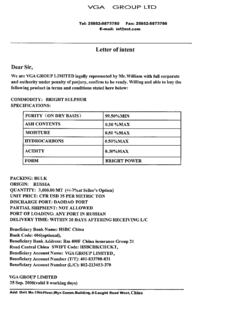 W
WA letter of intent is a document outlining the understanding between two or more parties which they intend to formalize in a legally binding agreement. The concept is similar to a heads of agreement, term sheet or memorandum of understanding. Such outlined agreements may be merger and acquisition transaction agreements, joint venture agreements, real property lease agreements and several other categories of agreements that may govern material transactions.
 W
WA letter of marque and reprisal was a government license in the Age of Sail that authorized a private person, known as a privateer or corsair, to attack and capture vessels of a nation at war with the issuer. Once captured, the privateers could bring the case of that prize before their own admiralty court for condemnation and transfer of ownership to the privateer. A letter of marque and reprisal would include permission to cross an international border to conduct a reprisal and was authorized by an issuing jurisdiction to conduct reprisal operations outside its borders.
 W
WLetters patent are a type of legal instrument in the form of a published written order issued by a monarch, president, or other head of state, generally granting an office, right, monopoly, title, or status to a person or corporation. Letters patent can be used for the creation of corporations or government offices, or for granting city status or a coat of arms. Letters patent are issued for the appointment of representatives of the Crown, such as governors and governors-general of Commonwealth realms, as well as appointing a Royal Commission. In the United Kingdom they are also issued for the creation of peers of the realm.
 W
WLetters Patent, in the United Kingdom, are legal instruments generally issued by the monarch granting an office, right, title, or status to a person. Letters Patent have also been used for the creation of corporations or offices, for granting city status, for granting coat of arms, and for granting royal assent.
 W
WLettres de cachet were letters signed by the king of France, countersigned by one of his ministers, and closed with the royal seal. They contained orders directly from the king, often to enforce arbitrary actions and judgments that could not be appealed.
 W
WThe Malaysia Agreement or the Agreement relating to Malaysia between United Kingdom of Great Britain and Northern Ireland, Federation of Malaya, North Borneo, Sarawak and Singapore was the agreement which combined North Borneo, Sarawak, and Singapore with the existing states of the Federation of Malaya, the resulting union being named Malaysia. Singapore was later expelled from Malaysia, becoming an independent state on 9 August 1965.
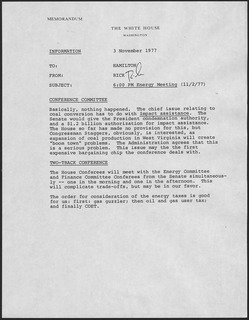 W
WA memorandum is a written message that is typically used in a professional setting. Commonly known as a "memo," these messages are typically brief and easily understood. By following this format, a memo offers an organization the chance to communicate important information efficiently in order to make dynamic and impactful changes.
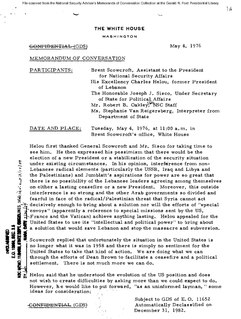 W
WMemorandum of conversation and also memorandum of a conversation and memo to the file refers to a method of contemporaneous documentation of a conversation in the form of a memorandum used by the United States federal government.
 W
WA national security letter (NSL) is an administrative subpoena issued by the United States government to gather information for national security purposes. NSLs do not require prior approval from a judge. The Stored Communications Act, Fair Credit Reporting Act, and Right to Financial Privacy Act authorize the United States government to seek such information that is "relevant" to authorized national security investigations. By law, NSLs can request only non-content information, for example, transactional records and phone numbers dialed, but never the content of telephone calls or e-mails.
 W
WA negotiable instrument is a document guaranteeing the payment of a specific amount of money, either on demand, or at a set time, whose payer is usually named on the document. More specifically, it is a document contemplated by or consisting of a contract, which promises the payment of money without condition, which may be paid either on demand or at a future date. The term has different meanings depending on the use of the term as it is used in the application of different laws, and depending in which country and context it is used.
 W
WA non-disclosure agreement (NDA), also known as a confidentiality agreement (CA), confidential disclosure agreement (CDA), proprietary information agreement (PIA), secrecy agreement (SA), or non-disparagement agreement, is a legal contract or part of a contract between at least two parties that outlines confidential material, knowledge, or information that the parties wish to share with one another for certain purposes, but wish to restrict access to. Doctor–patient confidentiality, attorney–client privilege, priest–penitent privilege and bank–client confidentiality agreements are examples of NDAs, which are often not enshrined in a written contract between the parties.
 W
WDiplomatic correspondence is correspondence between one state and another and is usually of a formal character. It follows several widely observed customs and style in composition, substance, presentation, and delivery and can generally be categorized into letters and notes.
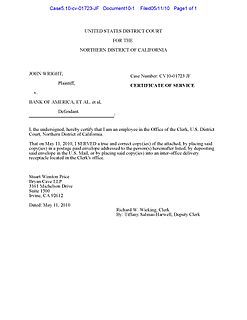 W
WA notice of electronic filing (NEF) is part of the system established by the Administrative Office of the United States Courts through the docketing and access systems of PACER & CM/ECF. PACER is a public-access system accessible by any person after registration and for a fee. CM/ECF is the Case Management/Electronic Court Filing system, available only to those admitted to a particular U.S. District or U.S. Court of Appeals. The NEF provides a record of service of an electronically filed document by parties, or of service of the electronically filed orders and judgments of the courts, upon attorneys in the case and the court. For such parties, the NEF has replaced the traditional service via US Mail or other "paper" methods.
 W
WA penal bond is a written instrument executed between an obligor and an obligee designed to secure the performance of a legal obligation through the in terrorem effect of the threat of a penalty for nonperformance.
 W
WPenalties in English law are contractual terms which are not enforceable in the courts because of their penal character. Since at least 1720 it has been accepted as a matter of English contract law that if a provision in a contract constitutes a penalty, then that provision is unenforceable by the parties. However, the test for what constitutes a penalty has evolved over time. The Supreme Court most recently restated the law in relation to contractual penalties in the co-joined appeals of Cavendish Square Holding BV v Talal El Makdessi, and ParkingEye Ltd v Beavis.
 W
WA preamble is an introductory and expressionary statement in a document that explains the document's purpose and underlying philosophy. When applied to the opening paragraphs of a statute, it may recite historical facts pertinent to the subject of the statute. It is distinct from the long title or enacting formula of a law.
 W
WA promissory note, sometimes referred to as a note payable, is a legal instrument, in which one party promises in writing to pay a determinate sum of money to the other, either at a fixed or determinable future time or on demand of the payee, under specific terms.
 W
WThe Quintipartite Deed was a legal document that split the Province of New Jersey, dividing it into the Province of West Jersey and the Province of East Jersey from 1674 until 1702.
 W
WIn corporate law, a stock certificate is a legal document that certifies ownership of a specific number of shares or stock in a corporation. Historically, certificates may have been required to evidence entitlement to dividends, with a receipt for the payment being endorsed on the back; and the original certificate may have been required to be provided to effect the transfer of the shareholding. Over time, these functions have been rendered redundant by statutory schemes to streamline the administrative burden on corporations. For example, most jurisdictions now impose an obligation on corporations to pay dividends to shareholders registered at a relevant point of time without the need to produce the share certificate as proof of entitlement and the certificate is no longer required to be produced with a transfer of a shareholding. In some jurisdictions today, the issue of paper stock certificates may be dispensed with, at least in some circumstances, and many corporations now provide a holding statement in lieu of a share certificate for each parcel of shares owned.
 W
WA ticket is a voucher that indicates that an individual is entitled to admission to an event or establishment such as a theatre, amusement park or tourist attraction, or has a right to travel on a vehicle, such as with an airline ticket, bus ticket or train ticket. An individual typically pays for a ticket, but it may be free of charge. A ticket may serve simply as proof of entitlement or reservation. A ticket may be valid for any seat or for a specific one.
 W
WA ticket of leave was a document of parole issued to convicts who had shown they could now be trusted with some freedoms. Originally the ticket was issued in Britain and later adapted by the United States, Canada, and Ireland.
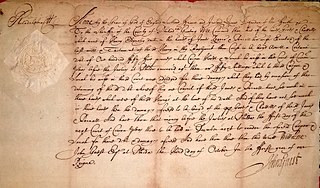 W
WIn common law, a writ is a formal written order issued by a body with administrative or judicial jurisdiction; in modern usage, this body is generally a court. Warrants, prerogative writs, and subpoenas are common types of writ, but many forms exist and have existed.